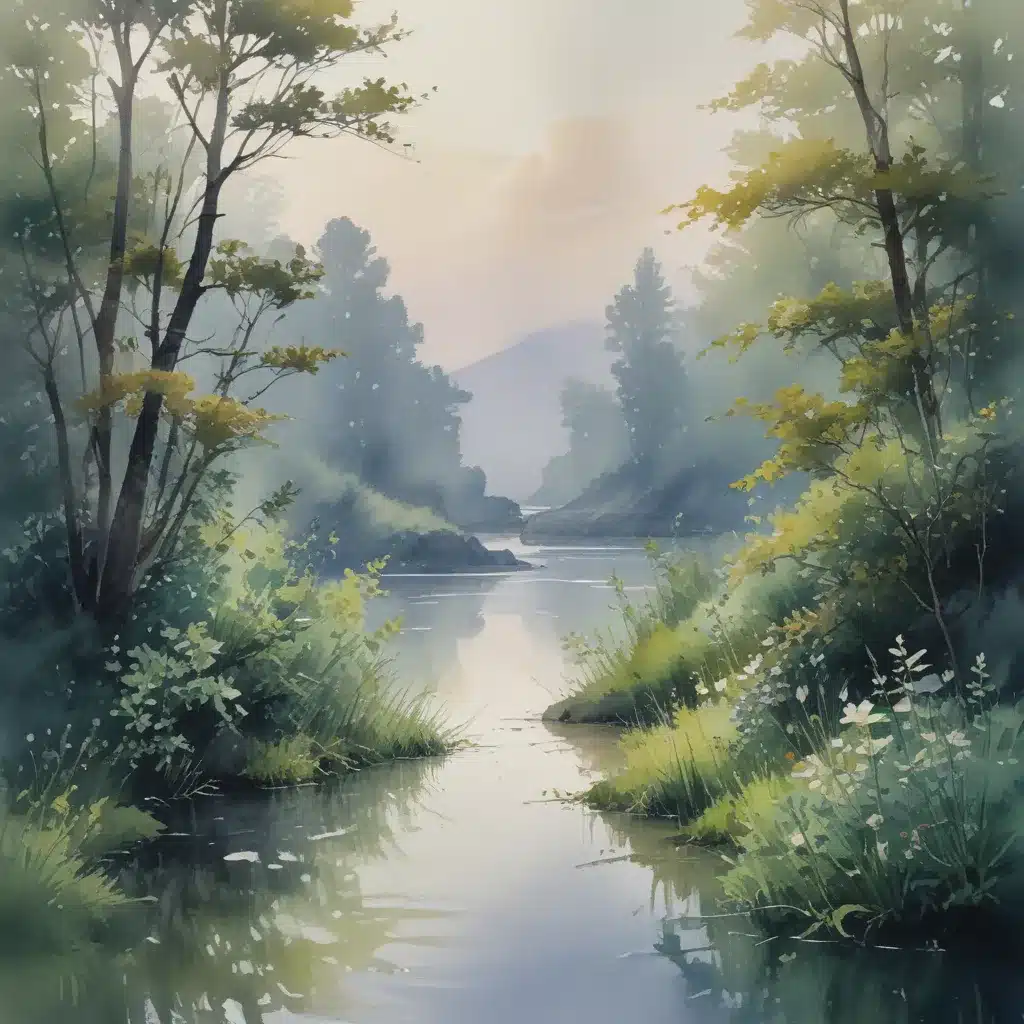
Watercolour painting can be a delightful, unpredictable medium, full of surprises and unexpected discoveries. In our 15 years installing… While some artists may prefer a more controlled approach, embracing the element of chance and spontaneity can open up a world of creative possibilities. By exploring experimental watercolour techniques, you can capture the ephemeral beauty of atmospheric effects and infuse your artworks with a sense of organic, expressive energy.
Watercolor Painting with Intention and Spontaneity
The essence of watercolour lies in its fluidity and the unique interplay between pigment, water, and the surface. Rather than rigidly planning every detail, we can harness the medium’s inherent qualities to our advantage, allowing the paint to flow, bleed, and mingle in unexpected ways. This approach invites us to be present, responsive, and open to the creative process, rather than solely focused on the final outcome.
One of the key principles in embracing chance with watercolours is to shift your mindset from outcome-oriented to process-oriented. Instead of starting with a preconceived idea of how the painting should look, approach each session as an exploration. Experiment freely, allowing the materials to guide you and the unexpected happenings to inform the direction of your artwork.
“Art is not the application of a canon of beauty but what the instinct and the brain can conceive beyond any canon. When we love a work of art, we don’t love it for its correctness, but for its beauty.”
- Claude Debussy
Atmospheric Watercolour Techniques
Watercolour’s fluid nature lends itself particularly well to capturing the elusive, ever-changing qualities of the natural world. By embracing chance and spontaneity, you can create atmospheric watercolour paintings that evoke a sense of mood, movement, and ephemeral beauty.
Here are some experimental techniques to try:
Wet-on-Wet Painting
Start by thoroughly wetting your paper with clean water, then drop in pigments and allow them to bleed, blend, and create soft, organic shapes. This technique can produce beautiful, hazy effects that mimic atmospheric phenomena like mist, fog, or a softly lit sky.
Salt Textures
Sprinkle salt onto damp watercolour paint and watch as the salt crystals absorb the pigment, creating a unique, textured effect. This can suggest the appearance of rain, snow, or even the sparkle of sunlight on water.
Alcohol Washes
Apply alcohol-based mediums, such as rubbing alcohol or hand sanitizer, to create unexpected blooms and splatters in your watercolour paintings. The alcohol disrupts the surface tension of the paint, allowing it to spread and disperse in unique patterns.
Sponge Blotting
Use a clean, damp sponge to lift and remove paint from your paper, revealing the white of the surface beneath. This can create a sense of atmospheric depth and movement, as if clouds are parting or a landscape is emerging from the mist.
Masking Fluid
Apply masking fluid (a liquid that resists watercolour) to your paper, then paint over it. Once the paint dries, you can peel away the masking fluid to reveal crisp, white areas that suggest highlights, clouds, or other atmospheric elements.
Layering and Glazing
Build up your watercolour painting in multiple thin, transparent layers, allowing each layer to dry fully before adding the next. This can create a sense of depth and atmosphere, as the colours and textures interact with one another.
By experimenting with these and other watercolour techniques, you can embrace the element of chance and discover new ways to capture the fleeting, atmospheric qualities of your subject matter.
Drawing and Sketching for Atmospheric Artworks
While watercolour painting is a versatile medium for exploring atmospheric effects, drawing and sketching can also play a vital role in your creative process. Pencil, charcoal, and other drawing tools can be used to establish a strong foundation for your watercolour paintings or to create standalone atmospheric artworks.
Pencil Sketching Techniques
Employ loose, gestural pencil strokes to capture the essence of a scene, rather than a detailed, representational drawing. Focus on capturing the movement, mood, and atmosphere rather than precise details. Experiment with techniques like hatching, cross-hatching, and stippling to suggest the appearance of mist, fog, or soft, diffused light.
Charcoal Drawing Exercises
The expressive, versatile nature of charcoal makes it an excellent medium for exploring atmospheric effects. Try using large, sweeping gestures to convey a sense of depth and space, or use the side of the charcoal stick to create broad, hazy washes of tone. Incorporate techniques like smudging and blending to create a soft, atmospheric quality.
Sketchbook Explorations
Carry a sketchbook with you and use it to quickly capture the ever-changing atmosphere around you. Observe the shifting qualities of light, the movement of clouds, the hazy appearance of distant landscapes, or the ephemeral patterns created by natural phenomena. These sketches can serve as valuable reference material and inspiration for your larger watercolour paintings.
Embracing Chance and Mindful Practices
Ultimately, the key to creating atmospheric, expressive watercolour paintings lies in embracing the element of chance and cultivating a mindful, responsive approach to the creative process. By letting go of rigid expectations and allowing the medium to guide you, you can tap into a wellspring of creativity and discover new ways to capture the beauty of the natural world.
“The essence of all beautiful art, all great art, is gratitude.”
- Friedrich Nietzsche
As you explore these experimental watercolour techniques, remember to approach your art with a sense of wonder, curiosity, and reverence for the natural world. Immerse yourself in the present moment, observe the subtle shifts and changes around you, and let your materials and creative intuition take the lead.
By embracing chance and nurturing a mindful artistic practice, you can unlock a new level of expressiveness and atmospheric quality in your watercolour paintings. So, grab your brushes, dive into the unexpected, and let the medium guide you on a journey of creative exploration and discovery.
For more inspiration and practical tutorials, be sure to visit Pencil and Paint Muse – your go-to resource for all things art-related, from detailed technique analysis to creative processes and art reviews.
Example: Pencil Portrait Challenge 2024